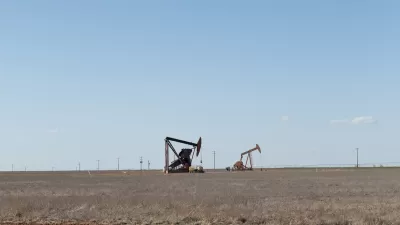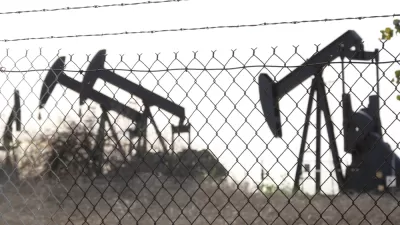Penn State researchers have found that repurposing abandoned oil and gas wells for geothermal-assisted compressed-air energy storage can boost efficiency, reduce environmental risks, and support clean energy and job transitions.

As the world transitions from fossil fuels to renewable energy sources like wind and solar, one of the biggest challenges is finding efficient ways to store energy for times when the sun is not shining or the wind is not blowing. A team of Penn State researchers has proposed an innovative solution: using geothermal heat from abandoned oil and gas wells to improve compressed-air energy storage (CAES) systems. This approach not only enhances storage efficiency by 9.5 percent but also reduces the high startup costs typically associated with CAES projects by reusing existing infrastructure.
The new geothermal-assisted CAES system takes advantage of heat from deep underground rock formations accessed through depleted wells, potentially making the technology more attractive to investors and operators. Heated air holds more pressure, allowing for more energy to be stored and later released to generate electricity during periods of high demand. Numerical modeling confirmed that this setup significantly increases system efficiency. Additionally, this method avoids the need to drill new wells, which can be prohibitively expensive and environmentally disruptive.
Repurposing these wells offers broader benefits beyond energy storage. There are an estimated 3.9 million abandoned oil and gas wells in the U.S., many of which leak methane, a potent greenhouse gas. Using these wells for CAES can help seal and manage them, thereby reducing environmental risks and contributing to climate goals. This strategy could also preserve jobs in legacy fossil fuel communities by reusing infrastructure and involving local workers in the clean energy transition. The research was supported by the U.S. Department of Energy and conducted under Penn State's Repurposing Center for Energy Transition (ReCET).
FULL STORY: Reusing old oil and gas wells may offer green energy storage solution

Alabama: Trump Terminates Settlements for Black Communities Harmed By Raw Sewage
Trump deemed the landmark civil rights agreement “illegal DEI and environmental justice policy.”

Planetizen Federal Action Tracker
A weekly monitor of how Trump’s orders and actions are impacting planners and planning in America.

The 120 Year Old Tiny Home Villages That Sheltered San Francisco’s Earthquake Refugees
More than a century ago, San Francisco mobilized to house thousands of residents displaced by the 1906 earthquake. Could their strategy offer a model for the present?

LA’s Tree Emergency Goes Beyond Vandalism
After a vandal destroyed dozens of downtown LA trees, Mayor Karen Bass vowed to replace them. Days later, she slashed the city’s tree budget.

Sacramento Leads Nation With Bus-Mounted Bike Lane Enforcement Cameras
The city is the first to use its bus-mounted traffic enforcement system to cite drivers who park or drive in bike lanes.

Seattle Voters Approve Social Housing Referendum
Voters approved a corporate tax to fund the city’s housing authority despite an opposition campaign funded by Amazon and Microsoft.
Urban Design for Planners 1: Software Tools
This six-course series explores essential urban design concepts using open source software and equips planners with the tools they need to participate fully in the urban design process.
Planning for Universal Design
Learn the tools for implementing Universal Design in planning regulations.
Ada County Highway District
Clanton & Associates, Inc.
Jessamine County Fiscal Court
Institute for Housing and Urban Development Studies (IHS)
City of Grandview
Harvard GSD Executive Education
Toledo-Lucas County Plan Commissions
Salt Lake City
NYU Wagner Graduate School of Public Service





























